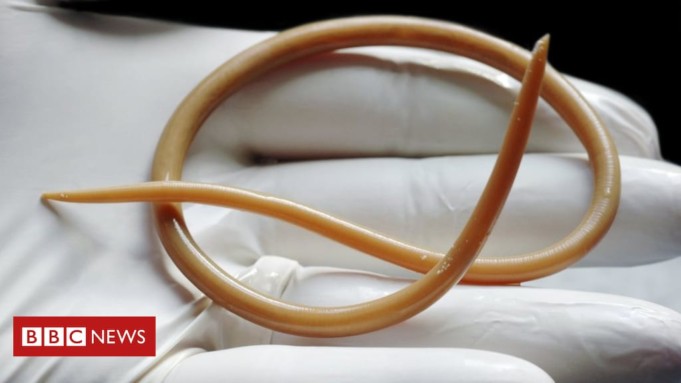Mosquitoes are very tiny creatures, yet they cause a whole lot of trouble. For the majority of people, when the topic of mosquitoes come up the first thing that comes to mind is malaria, and then there’s a thought of the annoying sounds they make when you’re trying to sleep.
However, there is more damage these tiny creatures can do than merely spreading malaria. All over the world people spend thousands of dollars on insecticides and mosquito repellents just to avoid the spread of diseases carried by this insect especially in tropical regions.
A worm is the last thing you think mosquitoes are capable of transferring into your bloodstream never the less, a 60-year-old man who lives in India recently had a parasitic worm of around 15 centimetres in length removed from his eye and doctors say it was the handiwork of mosquitoes.
According to doctors, the Indian man had complained of severe itching in his eyes for some months, but they never suspected he had a worm crawling in there. The intriguing part about the worm removal process was that the doctors had to find a way to take it out alive so that it doesn’t cause further damage to the patient’s eyes.
According to Dr Shrikanth Shetty who was the man’s ophthalmic surgeon during his talk with daily mail, “The challenge was to pull out the worm live as killing it inside the eye would have created complications.
It was also difficult to pin it down as it was moving around.” Once the doctor was able to pull out the worm immediately identified it as a worm belonging to the Wuchereria bancrofti species and confirmed its length as 15meters.
According to the World Health Organisation, the Wuchereria bancrofti worm is a species of parasitic roundworms that can be transmitted into a person’s system through mosquito bites.
The doctors proceeded to engage in further testing and discovered that the patient had several of such ones in his bloodstream and will require other treatments.
Back to the Worm
A condition called lymphatic filariasis is caused by the Wucheria bancrofti worm when it infects humans and disrupts their lymphatic system. Now the question is how exactly does this one get into the human body surprisingly all it takes is a single mosquito bite.
When an infected mosquito bites a person, it transfers the parasitic larva into the person’s body system, and that larva begins to multiply itself and travels to the body’s lymphatic system which is where they continue to grow.
The specific ones can reside in a human body for up to six to eight years and multiply within the time frame spreading to different parts of the body using the blood as a vehicle for their movement.
Unlike many other infections and infection from the specific warm does not usually show any outward signs or symptoms except on very rare occasions like in this Indian man’s case even so according to the world health organisation and infection from this warm can cause damage to the kidney and the entire lymphatic system. Furthermore, there are cases where the infection can become a very chronic condition causing inflammation and swellings around the skin.
It appears the case of this Indian man is not the first to be reported back in 2015 the tropical journal of medical research reported the case of a 34-year-old man who complained of skin irritation redness and photophobia in his left eye. Eventually, it was discovered that there was a Wucheria bancrofti in the eye.
Well, there is good news for people living in the united states of America as the centre for disease control has ascertained that such infection is not likely to occur in that environment people in Asia and most parts of Africa are however at risk.
Now that you know mosquitoes are not only capable of spreading malaria, it is advisable that you fumigate your environment and also keep your surroundings clean to avoid the breeding of this insect.












